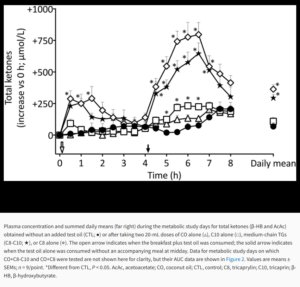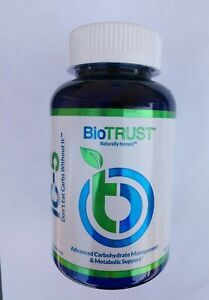DISCLAIMER
The information on this page and in the video below is not to be taken as medical advice, and neither participant is a doctor or oncologist.
You must speak to your doctor and receive written approval when beginning any new diet and/or supplementation program, and we take no responsibility for the opinions, evidence, or alternative adjunct strategies stated herein.
No diet or supplementation program should ever be used as a replacement for sound medical treatment, which should be followed under the care of your medical specialist.
Statements on this page and in the associated interview have not been approved by the FDA.
Continue at your own risk.
A year after helping us Optimize Brain Performance, Shawn Wells returns to the PricePlow Podcast for a very informative interview, especially for those considering some adjunct therapy or last-ditch efforts when all others have failed.
We're talking about cancer, specifically brain cancer (and even more specifically, glioblastoma).
It's best to watch the video yourself, and we'll have plenty of links below. Note that the video is long, and also gets into the entire "state of the situation" after we're done talking about cancer specifically:
Targeting Cancer and other Metabolic Diseases with Diet, featuring Shawn Wells
A ton of this entire discussion centers around the answer to this ultra-important question, however:
Is cancer a metabolic disorder?
Before proceeding any further down this path, the first question one has to ask themselves is if they believe the "Cancer is a Metabolic Disorder" theory.
The best and most convincing video to watch on the subject is by Dr. Thomas Seyfried, titled "Cancer: A Metabolic Disease With Metabolic Solutions". It is embedded below:
More recently, Dr. Seyfried has published a paper titled Press-pulse: a novel therapeutic strategy for the metabolic management of cancer that I brought up in the podcast with Shawn.
If you believe that metabolic disorders caused by diet may be the most pressing cause of the proliferation of cancer (as Shawn states in the video, he believes it is 90% of the time), then there are ways to attack this potential root cause alongside an oncologist's prescribed therapy.
Shawn's Last-Ditch Adjunct Gameplan for Glioblastoma / Brain Cancer
As mentioned in the interview above, Shawn had very little time to assist with someone's terminal condition. This is the entirety of what he suggested (the suggestions start at the 25:00 mark in our interview above):
-
THERAPEUTIC Diet
Therapeutic typically means achieving a Glucose "K-Tone" Index (GKI) of 1.0. This is calculated using the formula based upon this study by Dr. Thomas Seyfried, the man mentioned above.

How to calculate your GKI if you're measuring glucose in US units and BHB in international units, like our Precision Xtras will do. From the Seyfried study cited above.
This is possible -- in fact, I achieved a GKI of nearly 1.0 by accident, but I only got to those levels when I lowered protein (not on purpose) and was fasting for a while. Which leads us to our next point:
-
Intermittent Fasting
In order to get into a "therapeutic" state as mentioned above, it's far easier to do it unless you're fasting or are extremely caloric-restricted.
In the case of being in a total hurry, one could drop to zero-carb and go on a very low-calorie diet until getting there, and then begin nudging protein and fat back up.
Hint: Breakfast is not the most important part of the day!
-
Hyperbaric Oxygen Chamber
This must be done under an experienced professional's care. Typically one must start low and bump up.
-
Intravenous Vitamin C

From the study linked below, C8 MCT Oil does some amazing things compared to the other fatty acid chains over the next few hours!
In the case that IV Vitamin C is not available and all options have been exhausted, high-dose liposomal Vitamin C can be taken orally, but IV Vitamin C is urged.
-
C8 MCT
C8 MCT oil is a medium chain triglyceride oil that is 100% Caprylic Acid. It's called "C8" because there are 8 carbons, as opposed to longer chains which take more time to beta-oxidize.
The study Shawn mentions regarding C8 working best is titled "Tricaprylin Alone Increases Plasma Ketone Response More Than Coconut Oil or Other Medium-Chain Triglycerides: An Acute Crossover Study in Healthy Adults".
-
Exogenous Ketones
There are several types of BHB Salts on the market. It's suggested you get one with no artificial colors, sweeteners, or flavors. BHB stands for Beta Hydroxybutyrate, the primary ketone body created when fasting / exercising. Taking them supplementally is known as taking them "exogenously".
It may be worth investigating the D-BHB vs. L-BHB, as D-BHB is the one released by the body.
-
CoQ10
Also known as Coenzyme Q10, typically taken for heart health but also helpful for mitochondrial health.
-
PQQ
Also known as Pyrroloquinoline Quinone, PQQ is commonly stacked alongside CoQ10 and is also used for mitochondrial health.
-
Creatine
Most often known as a muscle-building supplement, creatine assists with the production of ATP (the energy "currency" in all cells), and raw creatine did not affect my blood sugar (it's also tasteless and cheap).
-
Betaine
Also known as TMG or Trimethylglycine, betaine is another ingredient often sold as a muscle-builder, it's commonly paired alongside creatine.
-
Methylcobalamin
This is the active form of Vitamin B-12.
-
5-Methyltetrahydrofolate (5-MTHF)
Also known as 5-MTHF, this is the active form of folate.
-
Berberine
Last but certainly not least, berberine is an herb that works as a "glucose disposal agent" we've come to love at PricePlow Nation. Shawn helped develop a form of berberine known as GlucoVantage, which is actually dihydroberberine.
Per Shawn, it turns out that this can also accelerate ketone production.
There may be more, but alongside a doctor's therapy, the above list is the exhaustive supplemental and dietary attack on mitochondrial disorders, which could include brain cancer and glioblastoma if you are on the same page as Dr. Thomas Seyfried.
Regarding the High Blood Sugar and Dementia Connection
In the interview at roughly the 17-minute mark, I mention how high HbA1c levels have been strongly correlated with dementia, which we covered previously on this blog. The evidence gets stronger and stronger for people who claim Alzheimer's (and similar neurodegenerative diseases) to be "Type-3 Diabetes".
More about Shawn Wells
Shawn Wells, who is known as ZoneHalo on social media (links are below), is a research scientist with a massive knowledge-base in the nutrition and supplementation fields. Shawn earned his Master's Degree in Nutritional Biochemistry at UNC-Chapel Hill, and also received a minor in Exercise Science.
Shawn's Credentials and History
Shawn's also a Registered Dietitian and Certified Sport Nutritionist (CISSN). He has over a decade in nursing care, making it all the way to a role as Chief Clinical Dietitian. He now runs Zone Halo Research and is also the Chief Science Officer (CSO) at BioTRUST Nutrition, where he runs R&D, Quality Control, and the Regulatory departments.
Before that, Shawn was Director of R&D at Dymatize Nutrition, which is now owned by Post Holdings.
Shawn's Previous PricePlow Podcast
Watch the video on our Optimizing Brain Performance with Shawn Wells
Find Shawn on Social Media
You can also head over to ZoneHalo.com.


